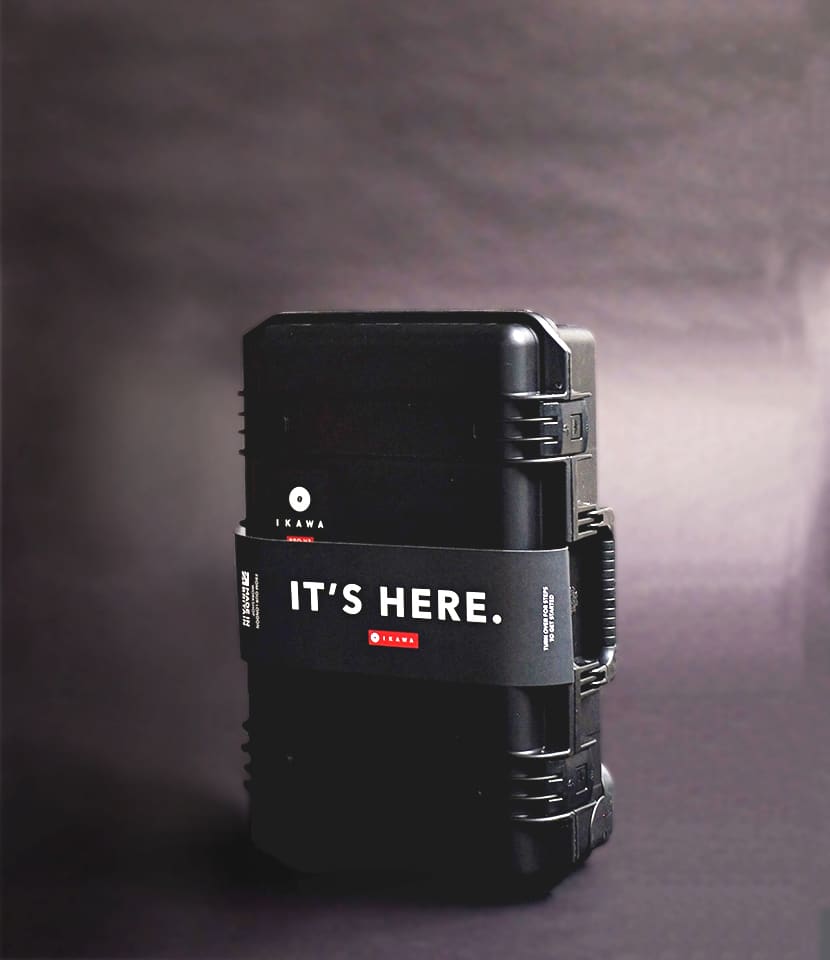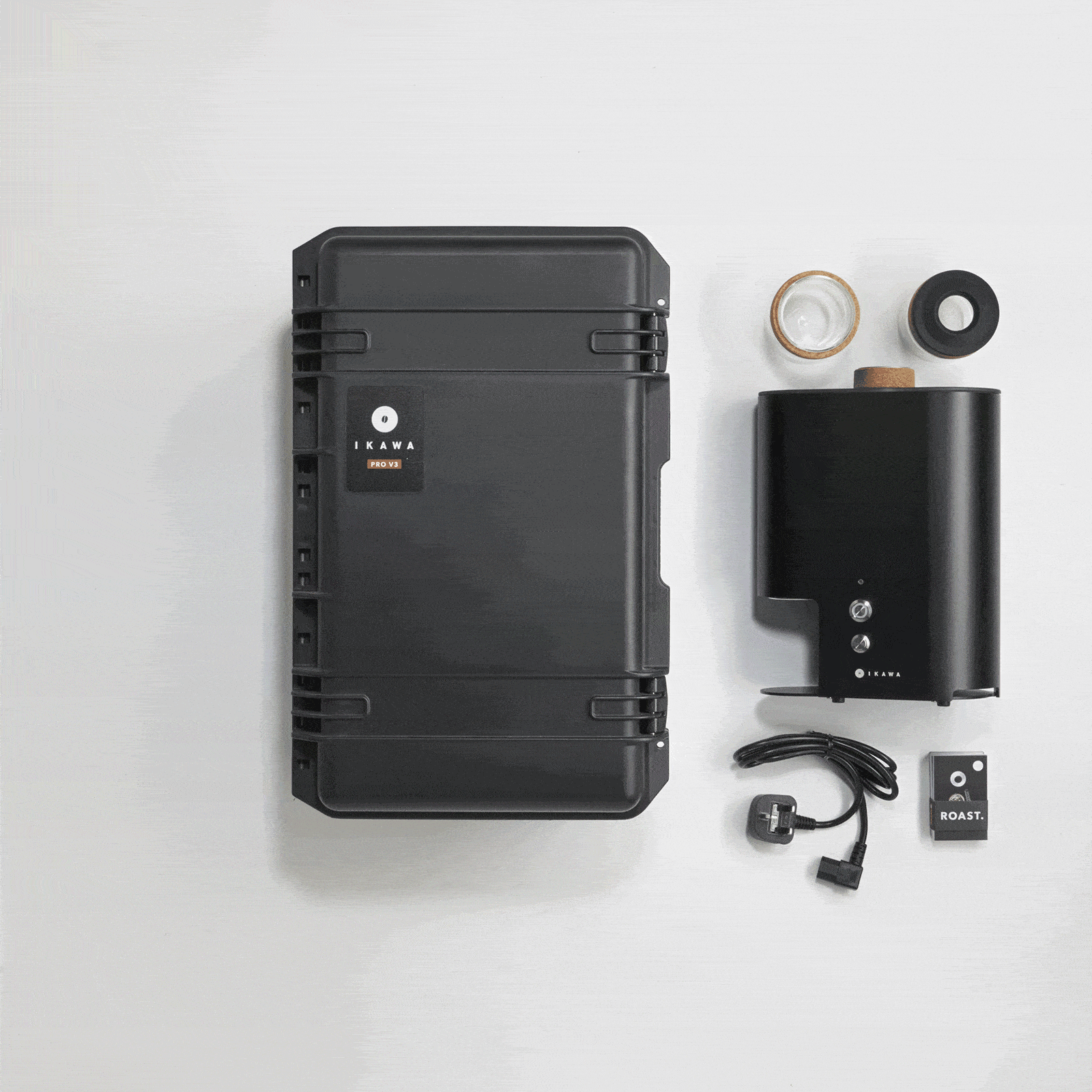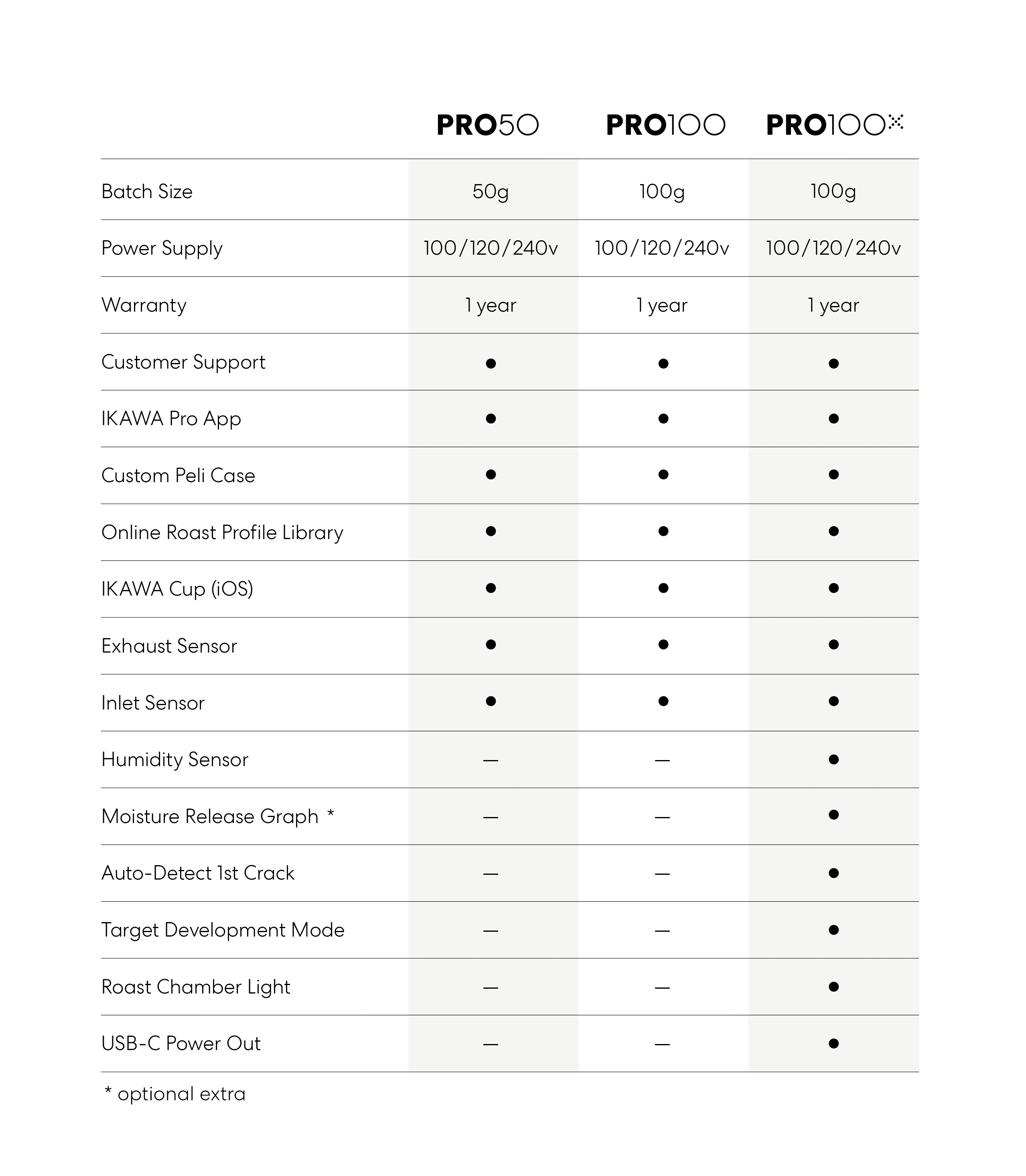Travelling With Your IKAWA Pro
The Plug and Play simplicity of an IKAWA Pro is not just great in the roastery, but enables you to roast on the road.
We sometimes get questions about voltage, altitude and the IKAWA Custom Peli Travel Case, so here’s a little more information for you.
VOLTAGE & MAINS POWER

IKAWA roasters are available for different mains voltage supplies;
100V, 110-130V and 220-240V.
You will have ordered the voltage that suits your home country.
If you’re not sure about the voltage of your roaster, check the sticker on the base of the roaster (and be sure to remove the Doser before turning the roaster upside-down!)
When travelling, please be sure to check the voltage of that country to check it is compatible with the voltage of your roaster.
For example, if you are based in USA and travel to Ethiopia, you will be taking a 120V roaster to a 230V mains supply. You must not plug your roaster into the incorrect mains voltage.
This can be solved by using an appropriate transformer when you travel, but please note it must be suitable for 1500 KW, and transformers are quite heavy to transport.
PLUG SOCKETS ARE NOT THE SAME AS A VOLTAGE TRANSFORMER!
For example you can use a different travel adaptor to plug in your American iPhone into an Ethiopian mains socket, but that does not make it suitable for your roaster – the mains voltage must be compatible.
This website is a reliable place to check the voltage of your destination country.
PLUG SOCKETS ARE NOT THE SAME AS A VOLTAGE TRANSFORMER!
For example you can use a different travel adaptor to plug in your American iPhone into an Ethiopian mains socket, but that does not make it suitable for your roaster – the mains voltage must be compatible.
This website is a reliable place to check the voltage of your destination country.
ROASTING AT ALTITUDE
The density of air decreases with greater altitude, which in turn means the air pressure is lower. If the air pressure is significantly lower, it will impact the airflow through the roaster – meaning that the roast outcome will vary from the same roast performed at sea level.
Roasting on Exhaust at high altitude (or lower airflow) will cause first crack happen slightly earlier, and as a result the roast will be slightly darker. To adjust for this, consider increasing the airflow for your roast profiles so the beans move at the same, or similar, rate to lower – or sea level – altitudes.
TRAVELLING BY PLANE

Your IKAWA Pro comes with a Custom Peli Case so you can take your roaster anywhere. It fits in most overhead compartments, so you can take it as carry-on luggage, or check it into the hold.
Pro V3: 11kg
Pro100: 12kg
Width: 36cm | 15in
Height: 55cm | 22in
Depth: 23cm | 10in
PACKING YOUR PELI CASE

Firstly, you’ll need to remove the doser. The doser is held in place with two small magnets and to ensure safe removal, make sure the roaster is upright on a flat surface, then simply grip the cork surround and pull up vertically. The doser should come out with ease. Place it in the peli case (top right as pictured above).
Next, remove the collection jar from the roaster and put to one side. Then lift and lower the main body of the roaster into the case with the buttons facing outwards. Now carefully re-insert the collection jar into the roaster. The fit is tight, but is designed to minimise the risk of breakages in transit. Then place your second collection jar in the largest aperture (top left of peli case as pictured above)
Alternatively, if you’d prefer to travel with only one collection jar, we recommend placing the single jar in the ‘spare’ largest aperture, rather than in the roaster.
Finally, tightly coil the power cable, and place in the rectangular hole at the bottom of the peli case.
Great! You’re all packed… Now simply shut the lid, securing both of the clips. You’re ready to go.

